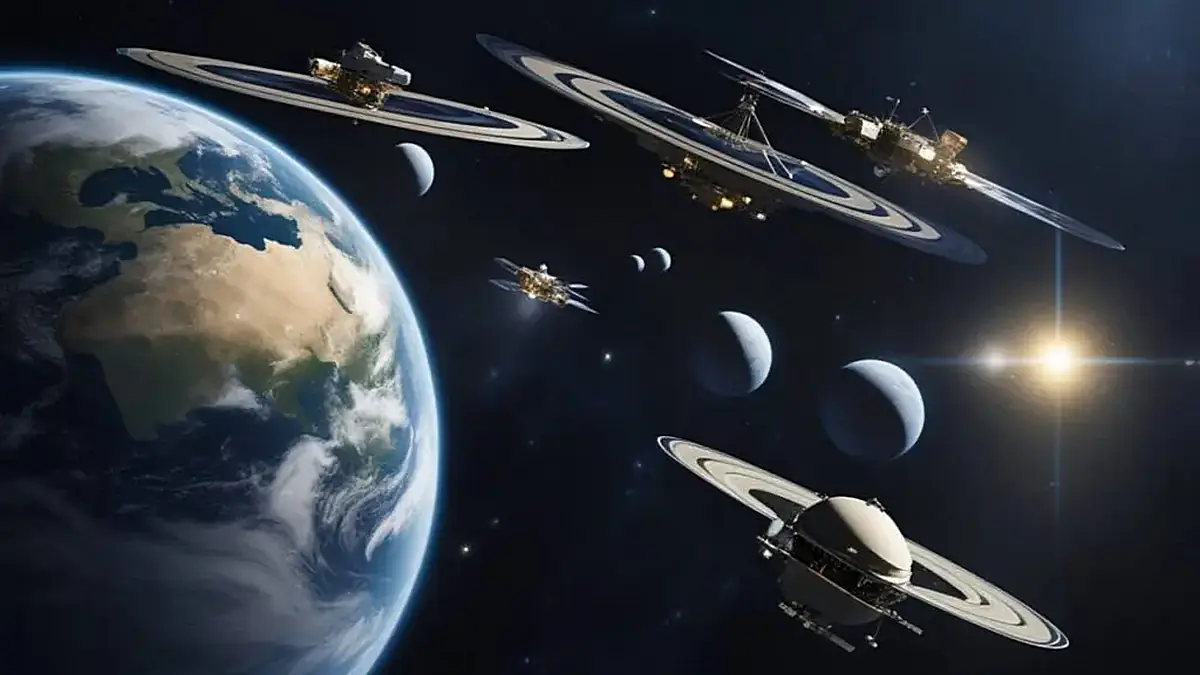For the past 50 years, starting from 1972 with the launch of Pioneer 10, humans have been sending spacecraft into deep space. These missions had various objectives: some targeted the Moon, others Mars, and some explored asteroids and comets. Amid these, a group of eight interplanetary explorers stands out. These spacecraft gained enough speed to permanently leave the Solar System and embark on an endless journey to the stars, with some even sacrificing themselves for the sake of science.

Most of these probes have avoided their expected demise and continue to operate beyond their initial mission lifespans. Initially, these spacecraft were designed to explore our neighboring planets, but now they are paving the way beyond the Solar System, providing astronomers with unique opportunities for space observations. To date, they have achieved much. In the future, when the Sun transforms into a red giant and destroys Earth, they may become the last human-made objects in the universe.
TABLE OF CONTENT:
New Horizons
New Horizons is the youngest probe in our selection. After completing its famous flyby of the dwarf planet Pluto in 2015, it continues its journey beyond the Solar System. According to calculations, it will reach the heliopause around 2040. Interestingly, at the time of its launch, Pluto was still considered a planet. The decision to “demote” Pluto came later. The images taken during this flyby amazed researchers. It turned out that Pluto has a “heart” (a massive, heart-shaped region) and is a geologically active body. Its moon, Charon, also surprised scientists with a giant system of fractures stretching along its equator.
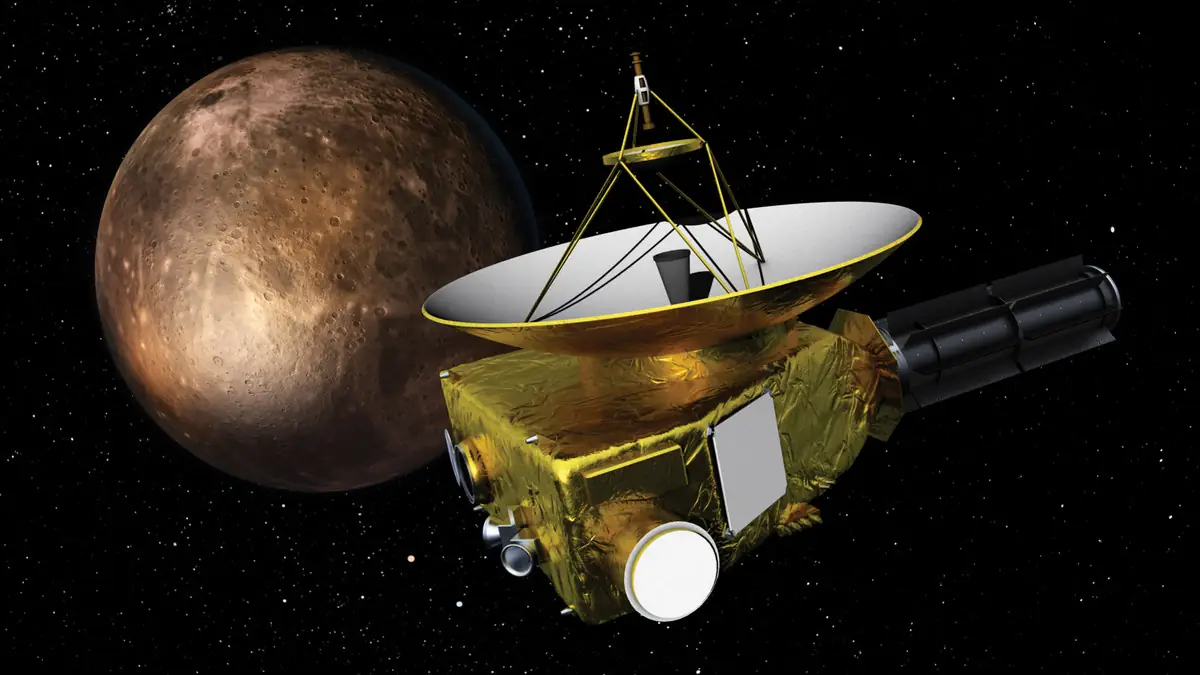
After flying past Pluto, New Horizons headed deeper into the Kuiper Belt. In 2019, it flew over Arrokoth, a trans-Neptunian object that became the most distant celestial body explored by a spacecraft from close range. In early 2022, New Horizons was put into hibernation mode while awaiting approval for new objectives as part of an extended mission.
The journey of New Horizons is still ongoing, and the mission team hopes to find another trans-Neptunian object to direct the spacecraft towards. Currently, the spacecraft is 59.4 AU (8.9 billion km) from the Sun. This distance is more than 21 times farther from the Sun than Earth and beyond the orbit of Uranus. At such a distance, sending or receiving a signal from the probe takes almost 3 hours. Each year, it moves 2.88 AU farther away from us, heading towards the constellation Sagittarius. Scientists hope to maintain contact with New Horizons at least until the late 2030s. Fortunately for the probe, everything indicates that it will have enough power to last even into the 2040s, possibly longer, advancing 480 million km each year into uncharted territory.
Pioneer 10
The Pioneer space probes hold a special place in the history of space exploration for their pioneering roles. Unfortunately, these 50-year-old spacecraft are no longer functional – Pioneer 10 lost contact in 2003, and Pioneer 11 has been silent since its last contact in 1995.

Pioneer 10 is the first spacecraft in history to cross the asteroid belt and visit Jupiter. Its success paved the way for all subsequent missions exploring the outer regions of the Solar System. The spacecraft was launched in 1972 and flew past Jupiter at the end of 1973, capturing the most detailed images of the planet at that time. One of Pioneer 10’s key discoveries was the data on the strength of Jupiter’s radiation belts, which was taken into account for planning future missions to the gas giant.
Jupiter’s gravity accelerated Pioneer 10 to escape velocity, allowing it to leave the Solar System forever. Thanks to its radioisotope power source, Pioneer 10 maintained contact with Earth until the early 21st century. The last telemetry from the spacecraft was received on April 27, 2002, and the final faint radio signal was detected on January 23, 2003. This is especially impressive considering Pioneer 10 was originally designed for a nominal mission duration of only 21 months!
Pioneer 10 is currently 136.5 AU (20.4 billion km) from the Sun, and it increases this distance by 2.5 AU each year. In about 90,000 years, it will pass within 0.75 light-years of the orange dwarf HIP 117795. According to calculations, Pioneer 10’s trajectory is directed towards the star Aldebaran, which it is expected to reach in about 2 million years. In case of an encounter with extraterrestrials, it carries a gold-plated aluminum plaque with information about Earth and a message for representatives of alien civilizations.
Pioneer 11
Pioneer 11 is the “twin” of Pioneer 10 and has an identical design. The spacecraft was launched in 1973. In 1974, it flew past Jupiter, after which engineers used the gas giant’s gravity to direct it towards Saturn. In 1979, Pioneer 11 passed by the rings of the planet, becoming the first spacecraft to visit its outer regions. It was equipped with various scientific instruments, including a magnetometer, a cosmic ray detector, and a plasma analyzer. It also carried a camera that took pictures of Jupiter and its moons, as well as Saturn and its rings.
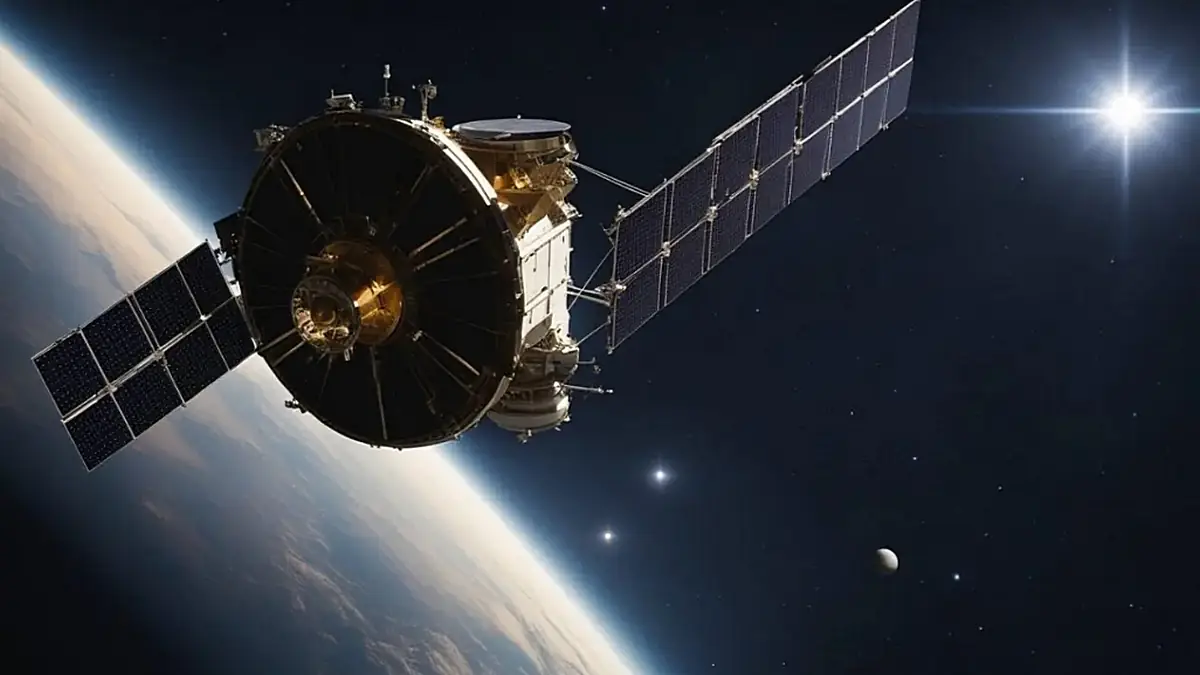
Pioneer 11 is currently 114.2 AU (17 billion km) from the Sun and increases this distance by 2.35 AU each year. In about 928,000 years, it will pass within 0.82 light-years of the orange dwarf TYC 992-192-1. After that, Pioneer 11 will head towards the constellation Aquila, reaching one of its stars in approximately 4 million years. Like Pioneer 10, it also carries a plaque with a message for representatives of extraterrestrial civilizations.
The Pioneer spacecraft were the first deep space probes and held the record as the most distant human-made objects from Earth until they were surpassed by the Voyager probes in the 1990s.
Voyager 2
Voyager 2’s endless journey began in August 1977. Interestingly, despite its higher mission number, it was launched a few weeks before its “twin,” Voyager 1. To date, Voyager 2 has achieved a unique milestone: it is the only spacecraft in history to have explored all four giant planets of the Solar System. Furthermore, no other Earth-launched spacecraft has visited either Uranus or Neptune. Much of what we know about these planets and their moons is based on observations and images from Voyager 2.
Recently, Voyager 2 surpassed Pioneer 10 to become the second most distant spacecraft from the Sun. Equipped with a wide array of scientific instruments, Voyager 2 is able to study the surrounding environment and the characteristics of the planets it has visited. It has discovered several new moons and provided valuable data on planetary atmospheres, magnetic fields, and rings.
Currently, it is 137.1 AU (20.5 billion km) from the Sun and increases its distance by 3.22 AU each year. The spacecraft remains in contact with Earth and continues to transmit data about its environment through NASA’s Deep Space Network. It takes about 18 hours for a signal to travel from Earth to Voyager 2 and another 18 hours for a response to return. However, the signal is currently very weak and unreliable for providing detailed data. NASA hopes to maintain contact with it until the end of this decade or the beginning of the next.
In case of an encounter with extraterrestrial civilizations, Voyager 2 carries the famous golden record with a message. It was prepared by a team of scientists led by the renowned science communicator Carl Sagan. Interestingly, the record also includes a photo of Ukrainian runner Valeriy Borzov, who, at the time the message was prepared, was the fastest person in the world.
In about 42,000 years, Voyager 2 will come within 1.7 light-years of the red dwarf Ross 248. After approximately 296,000 years, it will pass within about 4 light-years of Sirius.
Voyager 1
Voyager 1 was launched in September 1977 with the mission of studying the outer planets of our Solar System. Due to its slightly different trajectory, it soon overtook Voyager 2. In 1979, Voyager 1 flew past Jupiter, and two years later, it passed Saturn. The gravity of these gas giants accelerated it to a record heliocentric speed of 16.9 km/s, or 3.57 AU per year.

This has made Voyager 1 the most distant spacecraft in history. It also became the first human-made object to enter interstellar space. Currently, Voyager 1 is 164.1 AU (24.5 billion km) from the Sun, making it the farthest spacecraft ever created by humanity. Signals transmitted from Earth take 22.5 hours to reach the spacecraft, with an additional time required to receive a response. Despite recent technical issues, including a serious problem last year when Voyager 1 started sending distorted data about its location due to outdated computer equipment, the spacecraft is now functioning normally after repairs. Voyager 1 continues to operate and send data back to Earth. As with Voyager 2, NASA hopes to maintain contact with it into the next decade.
Voyager 1 is equipped with a variety of scientific instruments, including cameras, spectrometers, and magnetometers, which have allowed scientists to learn more about the outer planets and their moons. Throughout its journey, it has made several significant discoveries. Some of the most intriguing findings include:
- Evidence of the heliopause: Voyager 1 found the first direct evidence of the heliopause, which marks the boundary where the influence of our Sun ends and interstellar space begins.
- Satellites: Voyager 1’s discoveries have extended beyond planets to satellites such as Titan, Io, and Enceladus. A variety of features have been discovered on these satellites, such as liquid water, hydrocarbon landscapes, and volcanic activity.
- Plasma “hum” in interstellar space: Voyager 1 has detected a faint plasma “hum” in interstellar space. A “plasma hum” is a low-frequency “sound” made by plasma in space. Plasma is the fourth state of matter, consisting of ionized gas with positive and negative particles. In certain space environments, such as near planets or in the interstellar medium, plasma can produce a distinct hum due to its interaction with magnetic fields and other particles.
According to recent estimates, in about 40,000 years, Voyager 1 will approach the star Gliese 445 to a distance of 1.6 light-years. In 260,000 years, the spacecraft will come within less than a light-year of the red dwarf TYC 3135-52-1.
The Voyager team actively manages the power source on each spacecraft, which is diminishing every year as the spacecraft’s radioactive generators become less efficient. This year, the mission team turned off the heaters that kept several scientific instruments on board operational in the harsh, cold conditions of space – and, to everyone’s surprise, these instruments are still working. While Voyager 1 continues to transmit data to Earth, it is expected that the spacecraft will cease all operations by 2025, or at the latest by 2030. Like Voyager 2, it also carries a golden disc with a message for extraterrestrial intelligence. Perhaps one day, it will reach its destination, and we might be visited by aliens.
Cassini-Huygens mission
Cassini was one of the most ambitious attempts ever made in planetary exploration. Cassini, a joint project of NASA, ESA (the European Space Agency), and the Italian Space Agency (ASI), was a sophisticated robotic spacecraft sent to study Saturn and its intricate system of rings and moons in unprecedented detail. It was launched on October 15, 1997, from Cape Canaveral, Florida, aboard a Titan IV-B rocket with a Centaur upper stage.

Cassini delivered a probe called Huygens to the Saturn system. Built by ESA, the probe parachuted down to the surface of Saturn’s largest moon, Titan, in January 2005 – marking the most distant landing in our Solar System to date. Huygens provided stunning images and other scientific data during its two-and-a-half-hour descent through Titan’s hazy atmosphere, and then came to rest among rounded ice boulders on a plain dampened by liquid methane.
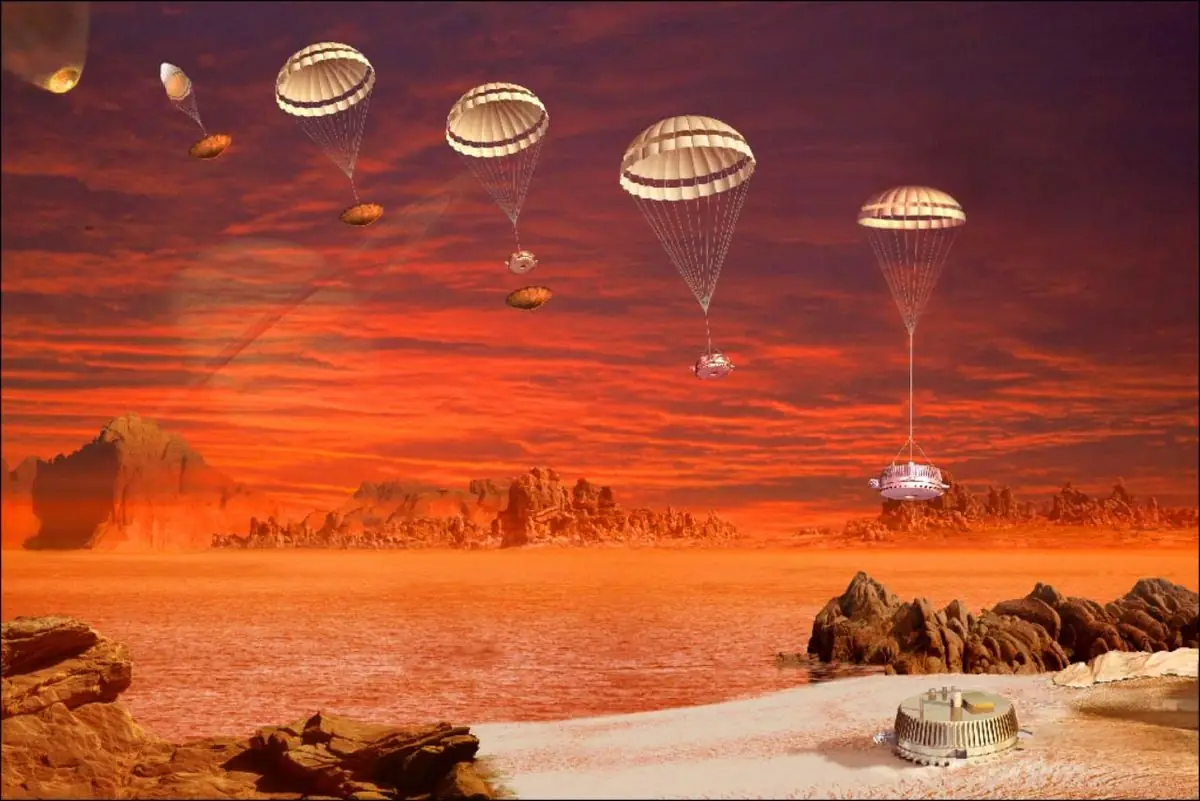
Cassini completed its initial four-year mission in June 2008 and received two extensions, allowing the team to delve even deeper into Saturn’s mysteries. Among the key discoveries during its 13 years at Saturn were a global ocean with strong signs of hydrothermal activity on Enceladus and lakes of liquid methane on Titan.
On September 15, 2017, the spacecraft made its final approach to the giant planet. This time, Cassini plunged into the planet’s atmosphere, sending scientific data until its small engines could no longer keep the spacecraft’s antenna pointed toward Earth. Shortly after, Cassini burned up and disintegrated like a meteor high above Saturn’s clouds. Although the spacecraft is no longer operational, its vast collection of data on Saturn – the planet itself, its magnetosphere, rings, and moons – continues to yield new discoveries.
Rosetta mission
ESA’s Rosetta mission was the first to rendezvous with a comet, the first to follow a comet in its orbit around the Sun, and the first to deploy a lander on the comet’s surface. Launched in March 2004, the Rosetta spacecraft arrived at comet 67P/Churyumov-Gerasimenko on August 6, 2014, after a decade-long journey through the Solar System. For over two years, the Rosetta orbiter and its lander, Philae, helped scientists decipher the composition of comets – primitive ice and dust balls that preserved untouched material from the early Solar System.

But like all good things, the Rosetta mission had to come to an end. Comet 67P made its closest approach to the Sun on August 13, 2015, coming within 116 million kilometers, and Rosetta observed this event. As the comet returns to Jupiter’s orbit, the solar panels on Rosetta would no longer be able to generate the energy needed to keep the spacecraft warm enough to survive at such a great distance.

The spacecraft spent a total of 12 years in the harsh conditions of space, with two of those years pressed against the dusty ice of the comet. But Rosetta did not go quietly into the night. The mission scientists hoped to gather as many images and chemical samples of comet 67P as possible during its descent, so they deliberately crashed the spacecraft into the comet’s surface. In the final moments of its flight, Rosetta transmitted as much data as it could while approaching the Ma’at region on the “head” of the comet.
Conclusions
The spacecraft spent a total of 12 years in the harsh conditions of space, with two of those years pressed against the dusty ice of the comet. But Rosetta did not go quietly into the night. The mission scientists hoped to gather as many images and chemical samples of comet 67P as possible during its descent, so they deliberately crashed the spacecraft into the comet’s surface. In the final moments of its flight, Rosetta transmitted as much data as it could while approaching the Ma’at region on the “head” of the comet.
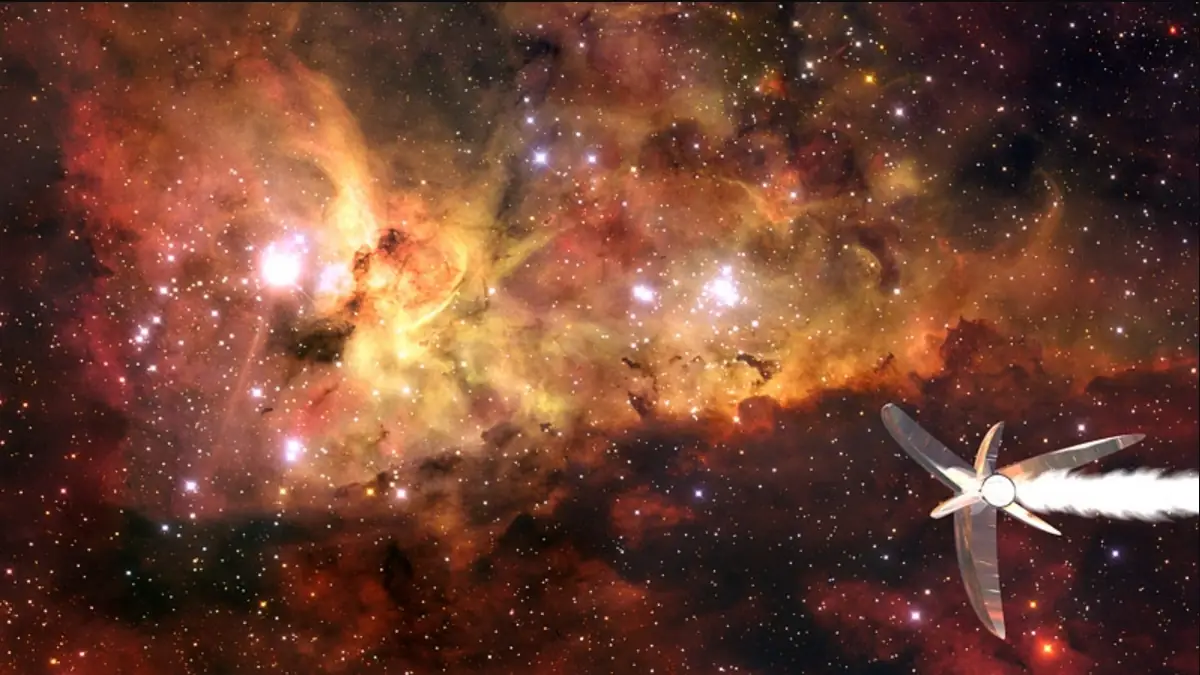
And who knows, maybe soon an alien will find the golden record and listen to Mozart, Bach, Beethoven, and Louis Armstrong.


